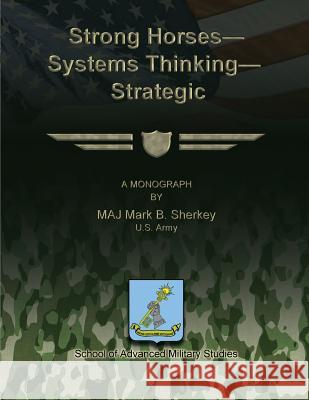Strong Horses - Systems Thinking - Strategic Communication » książka
Strong Horses - Systems Thinking - Strategic Communication
ISBN-13: 9781481165952 / Angielski / Miękka / 2012 / 106 str.
This study analyzes the theories of Pragmatic Communications, Cybernetics, and Perturbation under the framework of the Pragmatic Complexity Model to illustrate how two Presidential administrations beginning in the 20th and 21st centuries used 'new media' and systems thinking to communicate to both international and domestic audiences. Moreover, the study provides examples of how each used narratives to counter opposing ideologies. Similarly, this monograph explores two notions of Chinese thought, potential and propensity, which prove useful for studying diplomacy and strategic communication. The monograph explains why a systems approach coupled with cybernetics is the future for strategic communication, why the Pragmatic Complexity Model proves a plausible replacement for the 20th century Message-Influence Model, and how 'new media' technology provides better opportunities to compete in the global 'war of ideas.' The analysis of the Pragmatic Complexity Model reveals four core principles that should be adopted: 1) control of message is impossible; 2) less messaging is better; 3) the intent is not to persuade or influence audiences, rather perturb stable system structures; and 4) expect messages to fail rather than succeed, signaling the need for message contingencies. Nested within this model are elements of complex adaptive systems theory, emergence, and the vital importance of understanding the global information environment's propensity to produce emergent properties and added degrees of risk when looking for choices of intervention. Two Presidential Administrations in the 20th and 21st centuries were explored. The first case study focused on President Theodore Roosevelt, the significance of the Panama Canal, and his use of the 'Great White Fleet' to communicate to both international and domestic audiences' American ingenuity and the nation's ability to project power. Each of these events in history were inputs into the global information environment and demonstrated the principles of the Pragmatic Complexity Model. The second case study focused on the nation's newest President Barack Obama and his use of 'new media' technology to communicate to both international and domestic audiences. Like President Theodore Roosevelt, President Obama competes in the global 'war of ideas' through his administration's synchronization of his actions and narrative. More research certainly is needed to truly compare President Obama's presidency to President Theodore Roosevelt; however, in the context of using 'new media' technology and the use of narratives to communicate strategically to an array of audiences in the 21st century proves a useful study. The relevance of this study demonstrates that the 20th century Message-Influence Model needs to be replaced. Given the complexity of the information environment a message sent should no longer be assumed to succeed as intended. Given there is no cabinet level agency responsible for the nation's message, the President arguably is the defacto leader of the 'I.' Thus, a Presidential administration must view the global information environment systemically when communicating, must embrace 'new media, ' use cybernetics, and adopt the principles of the Pragmatic Complexity Model to be competitive in the 21st century global 'war of ideas.
Zawartość książki może nie spełniać oczekiwań – reklamacje nie obejmują treści, która mogła nie być redakcyjnie ani merytorycznie opracowana.











